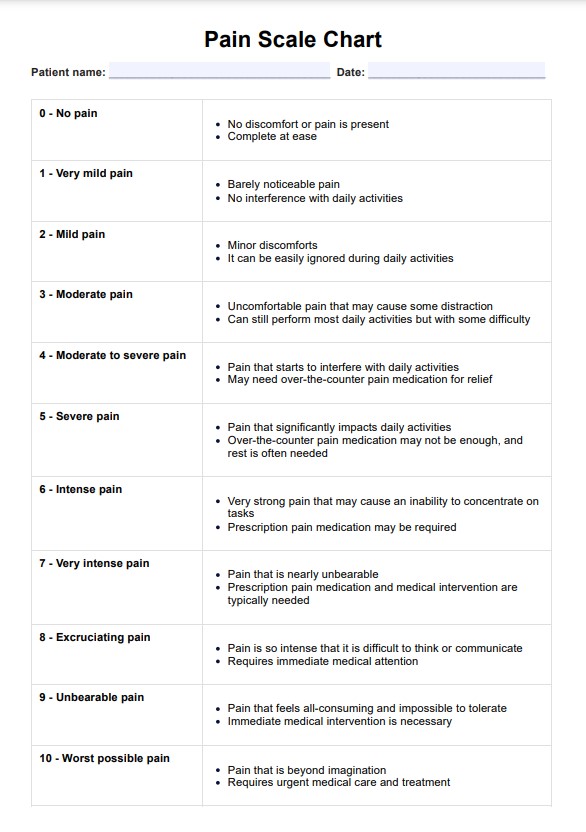Common Pain Level Charts include the Numeric Rating Scale (NRS), Visual Analog Scale (VAS), Verbal Rating Scale (VRS), and Wong-Baker FACES Pain Rating Scale. Each scale uses a different method to quantify pain, such as numbers, visual analogs, or descriptive words.

Pain Level Chart
Use the Pain Level Chart to understand patients' experience of pain and its impact on their functioning and well-being.
Use Template
Pain Level Chart Template
Commonly asked questions
During a doctor visit, individuals are commonly asked to rate their pain intensity on the provided scale, with 0 typically representing no pain and the highest number or descriptor representing the worst imaginable pain.
The frequency of pain assessments depends on the individual's condition and treatment plan. Pain should be assessed regularly, especially when changes in pain intensity are expected or when adjusting pain management strategies.
EHR and practice management software
Get started for free
*No credit card required
Free
$0/usd
Unlimited clients
Telehealth
1GB of storage
Client portal text
Automated billing and online payments











